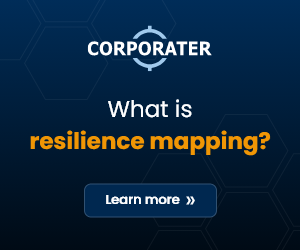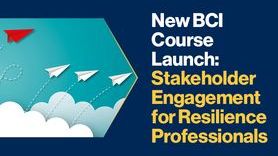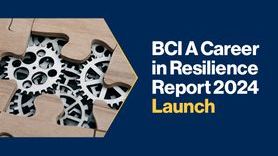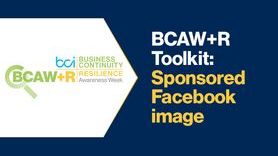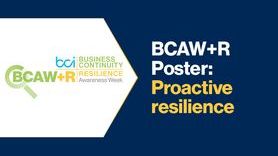BCI Extreme Weather and Climate Change Report 2022
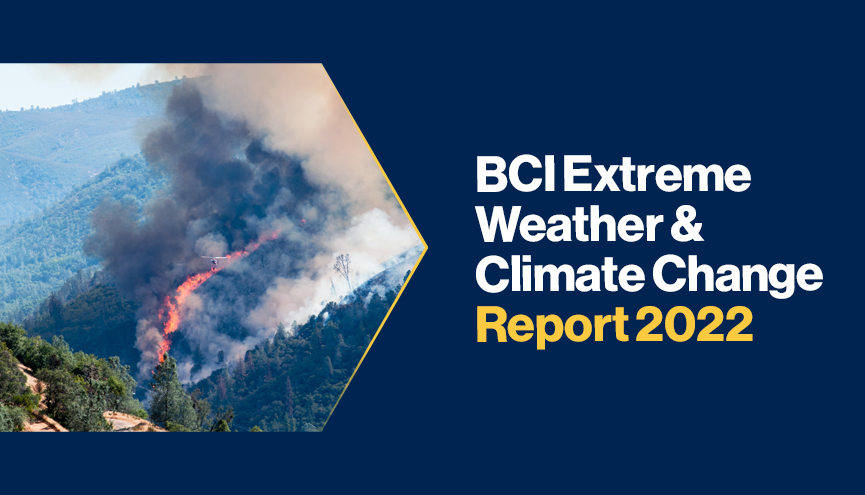
The BCI has released the Extreme Weather and Climate Change Report 2022, sponsored by the National Grid. This report examines the impact of severe weather events and climate risks on organizations, as well as the drivers and barriers towards responding to these risks.
Disconnect between extreme weather events and climate change
Despite 66.7% of organizations in the sample witnessing an increase in severe weather events, only 15.0% have described this rise as significant. As such, it appears that a link is still not being drawn between the increase in extreme weather disruptions and long-term climate risk. This means organizations still manage each extreme weather disruption through standard business continuity practices instead of considering the potential implications of a long-term, escalating risk.
This comes even though participants recognized the heavy toll paid by organizations for climate-related threats. At 62.5%, staff absence was seen as the main outcome of extreme weather threats but this was closely followed by loss of power and loss of premises. Losing any or all of these factors will have a hugely significant impact on an organization.
Responding to climate risk
Only 40.0% of respondents are able to secure an additional budget to improve resilience with regards to climate risk. As the report notes, this could be due to the organization assessing itself as soundly prepared to face climate risks, it could be that risk and resilience professionals are not convinced there is a need to address the matter yet, or it’s that management need further convincing of the worth of ringfencing a budget to address a matter which is not of immediate threat to the organization. Furthermore, only around a sixth of organizations dedicate part of their budget to climate risk while around a third believe it to be already embedded within other resources.
Taking a look at those measures which have been put into place to address climate risk, the most common was adding it to the organization’s risk register. However, if this is the practice, it is essential that organizations follow up with mitigation measures after flagging it and it is not something which is put there as mere lip service. These measures should then be tested, exercised and improved before being considered reliable.
Barriers to adoption of climate risk
According to participants, cost is the most significant barrier to the adoption of new or improved climate risk strategies. This could be due to the difficulty practitioners face in convincing management to spend on these strategies when they are not aware of the long-term risks associated with climate change. However, there are now good practice guides for climate risk strategies available which could help support their case if required.
Indeed, 70.1% of practitioners would like to see climate risk become part of regulatory requirements and 63.2% would support a mandate for organizations to have a climate risk assessment. From this response, we can see practitioners recognize climate risk and are calling for organizational change to support the implementation of mitigation strategies. Mandated requirements for meeting climate targets would also mean management teams have to take note and invest in tools, processes, and people in order to meet these requirements.
Other findings:
- At 32.9%, participants considered interruption to organizations as the primary driver to address climate-related risk.
- Half of respondents have experienced delays or disruptions in the acquisition of key products due to the effects of climate-related events on their supply chain.
- The main risk to organizations transitioning to a new climate-friendly policy is the reputational impact if standards cannot be met.
Rachael Elliott, Head of Thought Leadership at the BCI: “Climate change poses one of the greatest risks to businesses in the mid- to long-term, and we are already seeing the effects of global warming on the operational capacity of some organizations, particularly in areas of climate extremes such as Australia or the United States. What is encouraging is that many organizations are making changes to their strategies to help mitigate the changes they are already seeing – or expect to see – in the coming years. There is still a palpable disconnect, however, between extreme weather events and climate change. Many practitioners continue to deal with extreme weather events as acute risks rather than considering the long-term implications. Such thinking must change in the long term, and demands the commitment of management in building climate risk strategy to ensure their organizations are primed for the increasing climate disruption ahead.”
David Wright, Chief Engineer at National Grid: “Incidences of severe weather are increasing. There is still a disconnect, however, between addressing these incidents as chronic risks which will become more frequent and acute.”
For more information, please contact The BCI: [email protected]

